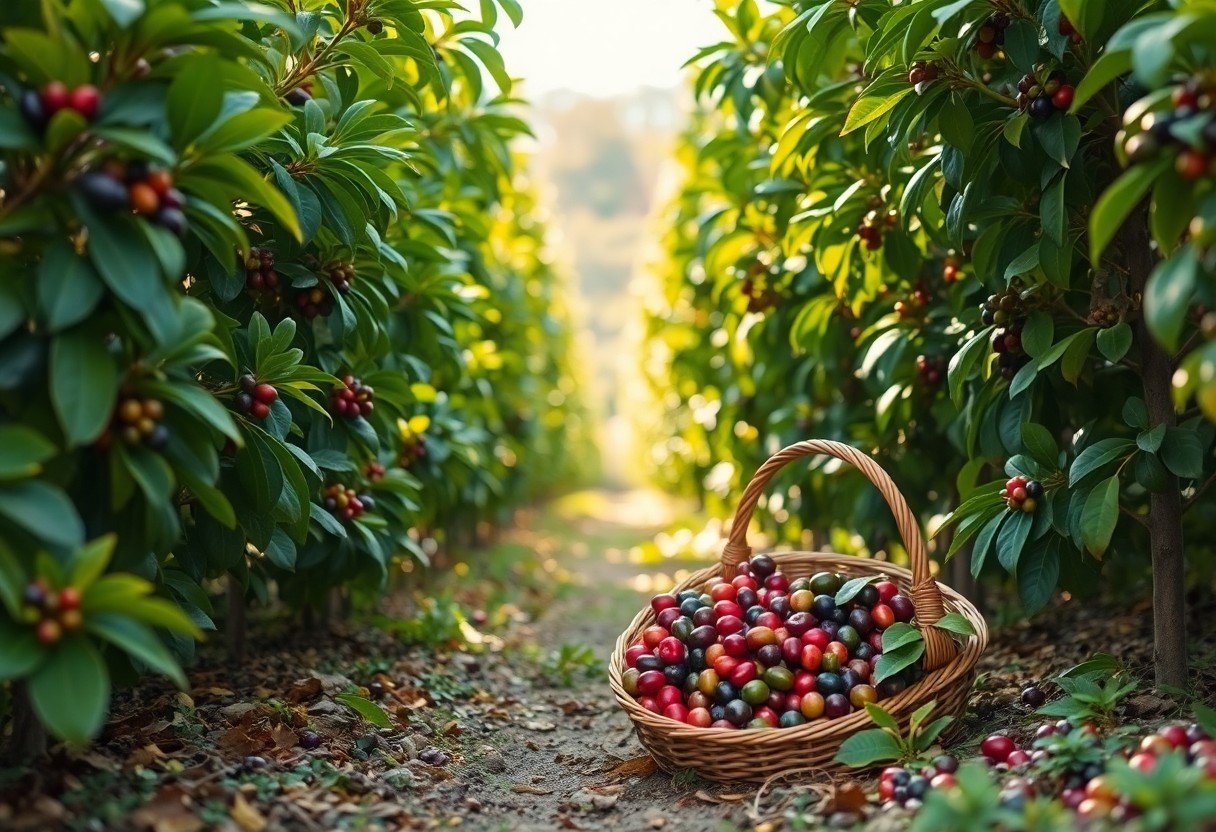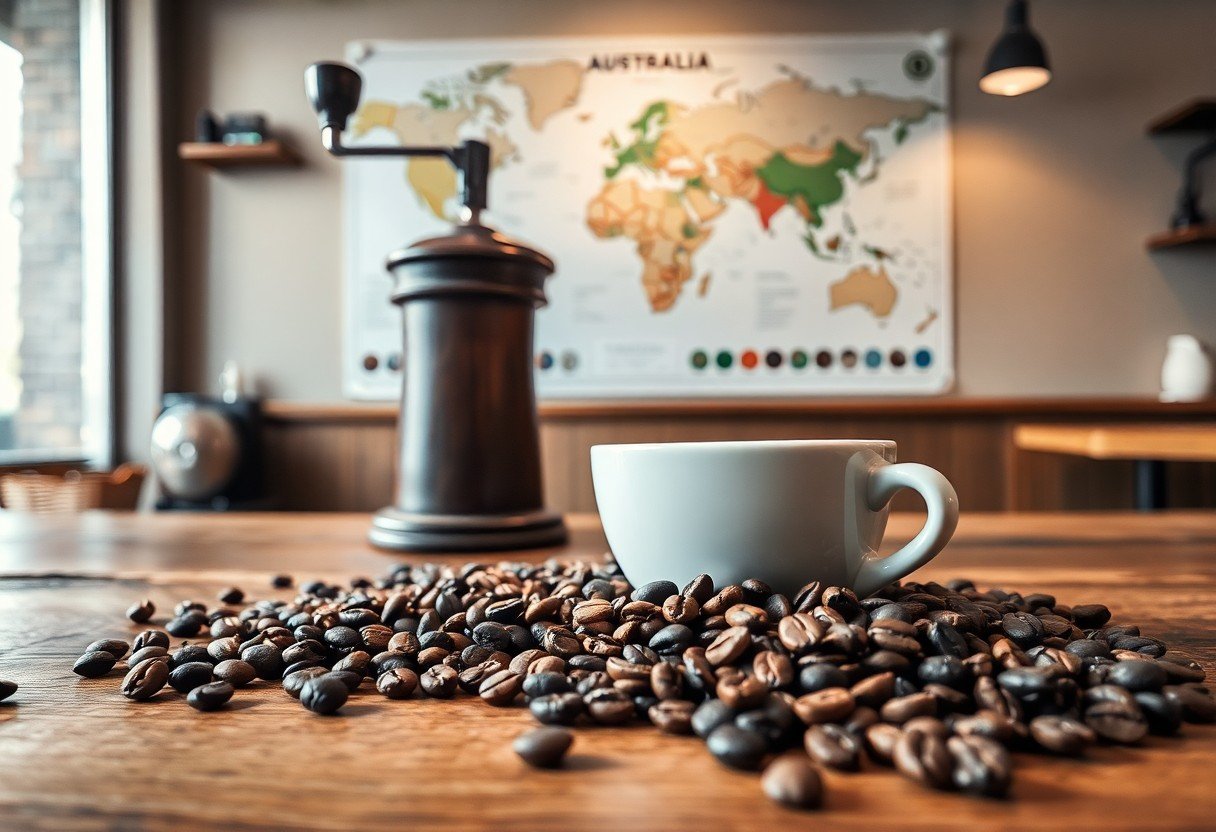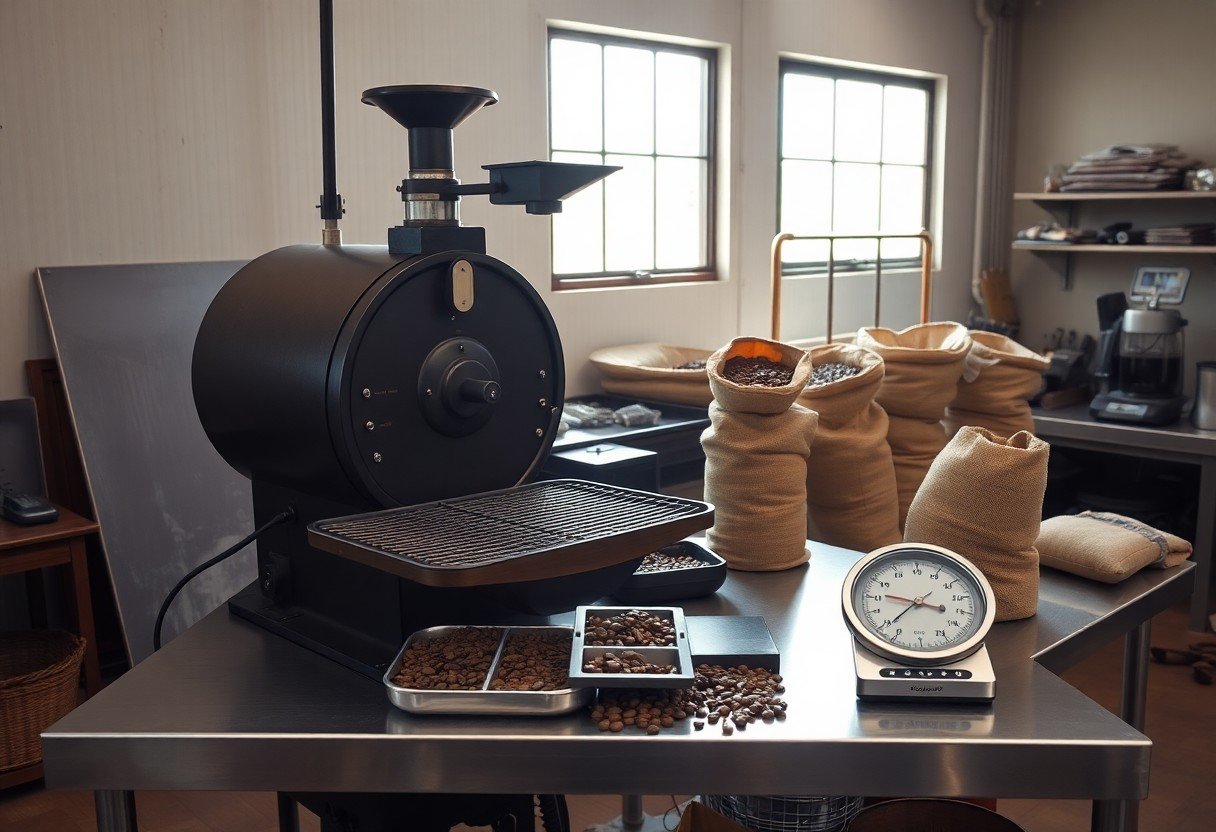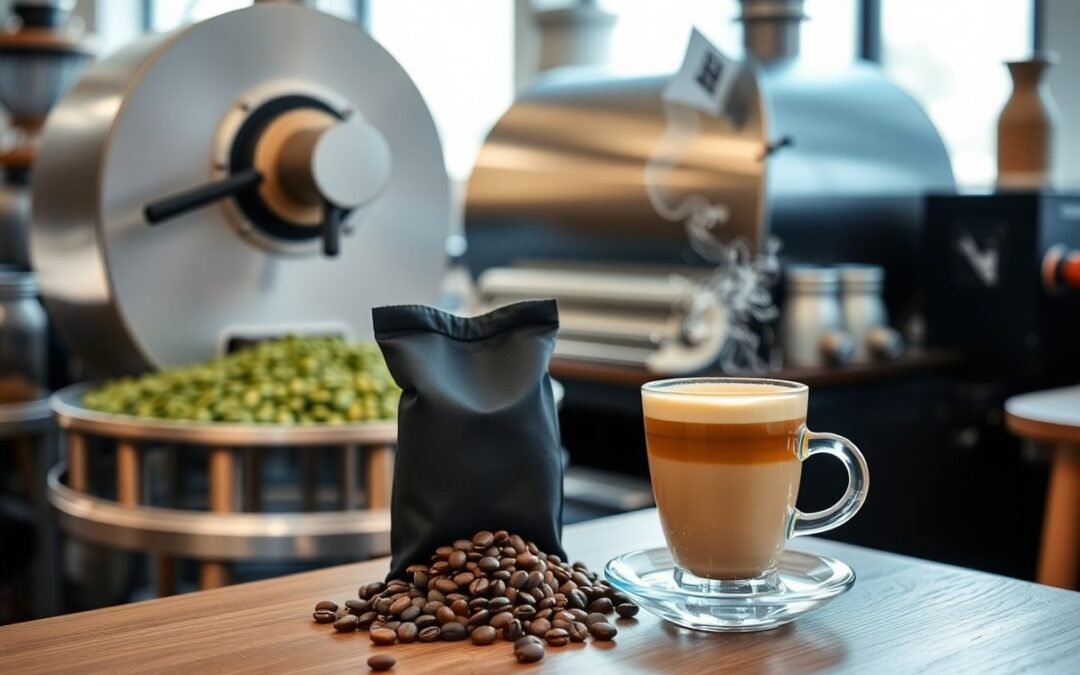Roasting transforms green coffee beans into the aromatic, flavorful beans you love. In Australia, this craft is elevated to an art form, with local roasters employing meticulous techniques to enhance the unique characteristics of each origin. You will explore the step-by-step process of roasting, from selecting the right beans to achieving the perfect roast profile, all while discovering how Australian culture shapes this increasingly popular practice. Delve into the nuances of flavor development and learn how to savor the brew that results from your perfectly roasted coffee.

The Journey of Coffee: From Seed to Cup
Cultivation Techniques in Australia
Your journey with coffee begins at the farm, where cultivation techniques significantly impact the quality of the beans. Australian coffee is often grown in diverse climates, from the cool hills of Victoria to the tropical regions of Far North Queensland. Farmers utilize careful shade management, organic practices, and precise irrigation methods to cultivate robust plants that produce high-quality cherries. Emphasis on sustainable practices not only enhances flavor but also appeals to the environmentally conscious consumer.
Harvesting is predominantly done by hand, allowing for selective picking of ripe cherries. This meticulous approach ensures that only the best cherries are processed, leading to superior flavor profiles in your cup. Local farmers are increasingly exploring regenerative agriculture techniques, focusing on soil health and biodiversity to improve yields without compromising the environment. This holistic approach reflects a deep commitment to quality over quantity.
Regional Flavor Profiles and Their Origins
Your coffee experience is deeply influenced by its origin, with Australian regions imparting distinct flavor profiles to the beans. The coffees from the New South Wales highlands, for instance, are known for their bright acidity and floral notes, while beans from the northern regions often offer chocolatey undertones with a smooth finish. These unique characteristics arise from variations in altitude, climate, and soil composition, making each cup a reflection of its geographical roots.
Regions like Byron Bay and the Granite Belt produce beans that embody the local terroir, with rich, complex flavors that tell a story of their environment. As coffee enthusiasts, exploring these regional distinctions allows you to appreciate how different cultivation methods and climates contribute to the cup’s ultimate taste. Engaging with local roasters who source these regional beans enhances your understanding of their unique flavor profiles, and helps you discover the delightful nuances each source has to offer.

Roasting Revelations: Understanding the Process
The Role of Temperature and Time
Temperature and time are your primary tools in the roasting process, delivering flavor complexity and style to your coffee. Each bean type reacts differently under varying conditions, leading to distinct taste profiles. For instance, lighter roasts typically require a temperature range of 180°C to 205°C for shorter durations, while darker roasts can reach up to 240°C for longer periods. Mastering these variables allows you to influence acidity, sweetness, and bitterness in your coffee.
Temperature & Time Influences
| Roast Level | Temperature Range (°C) |
|---|---|
| Light Roast | 180 – 205 |
| Medium Roast | 205 – 220 |
| Dark Roast | 220 – 240 |
The Transformative Stages of Roasting
The roasting process encompasses several stages that each contribute to the final flavor, aroma, and body of your coffee. Starting from the initial drying phase, moisture evaporates from the beans, setting the stage for the Maillard reaction, where sugars and amino acids react to create depth in taste. As you progress to first crack, the structural changes in the bean indicate that it’s time to make key decisions regarding the roast profile, leading to caramelization and ultimately impacting your cup’s sweetness and complexity.
Understanding these transformative stages is vital for achieving desired outcomes. The transition from drying to first crack marks a significant turning point, often requiring you to adjust heat application. For example, a brief period of insufficient heat can lead to underdeveloped flavors, while excessive heat may result in bitterness. Monitoring these stages closely will guide you toward mastering your roasting technique and enhancing your coffee experience.
Crafting the Perfect Roast: Techniques and Tips
Mastering coffee roasting involves a deep understanding of various techniques that can enhance flavor and aroma. Depending on your preference for precision or experimentation, you can choose from a range of methods to achieve the desired profile. Utilizing a combination of temperature control and monitoring roast time allows you to create a roast that resonates with your specific taste. Experimentation can yield exciting results, helping you discover nuances in flavor that elevate the coffee experience.
- Start by sourcing high-quality green beans.
- Use a reliable roasting machine that suits your scale.
- Pay attention to the first and second crack for timing your roasts.
- Keep a detailed log of each roast to track flavor development.
- Taste your coffee regularly to refine your technique.
This comprehensive approach not only ensures better roasting outcomes but also enhances your personal connection to the craft.
Manual vs. Commercial Roasting Techniques
Choosing between manual and commercial roasting techniques often depends on your production needs and desired level of engagement with the process. Manual roasting allows for greater control over variables like heat application and timing, letting you experiment with small batches. This approach can be particularly rewarding for coffee enthusiasts seeking to fine-tune their craft and explore different flavor profiles.
In contrast, commercial roasting techniques are designed to optimize consistency and efficiency for larger-scale production. Utilizing sophisticated machinery, you can achieve uniform results and replicate specific flavor notes across numerous batches. Understanding the trade-offs between these two methods helps you decide which is best suited for your roasting goals.
Flavor Profiling: How to Tailor Brews to Preference
Flavor profiling is a vital aspect of the roasting process that allows you to customize your coffee according to personal preference. By adjusting variables such as roast level, bean origin, and brewing techniques, you can highlight specific tasting notes. For instance, a light roast typically emphasizes acidity and fruity flavors, while a dark roast amplifies sweetness and boldness. The key lies in recognizing the unique characteristics of each bean and knowing how to manipulate the roasting profile to reveal those flavors.
Developing a keen sense of flavor profiling involves tasting a variety of roasts and understanding how they interact with brewing methods. You might find that certain beans perform better with specific equipment, such as pour-over versus espresso machines. Experimenting with different combinations can lead to surprising discoveries, allowing you to craft a brew that is uniquely satisfying to your palate.
The Coffee Community: Cultural Impact and Sustainability
The Rise of Artisan Roasters and Third Wave Coffee
The emergence of artisan coffee roasters and the third wave coffee movement has transformed the Australian coffee landscape. You’ll find small-batch roasters focusing on quality, crafting unique flavors that highlight the distinct characteristics of single-origin beans. Notable players like Proud Mary and Five Senses champion transparency in sourcing, allowing you to trace your cup back to its farm origin. This emphasis on direct trade relationships fosters not only excellent flavor profiles but also a deeper appreciation of the coffee journey.
Australians are increasingly prioritizing quality over quantity, favoring meticulously crafted coffee experiences. As cafes adopt this artisan approach, your morning brew becomes a celebration of craft, skill, and the art of roasting. This shift encourages baristas to engage more deeply with the brewing process, leading to a richer consumer experience that elevates every cup you enjoy.
Sustainable Practices and Ethical Sourcing
Sustainable practices in the coffee industry are gaining momentum, directly impacting how you enjoy your favorite beverage. Many Australian roasters are actively investing in environmentally responsible methods and fair trade initiatives. This engagement not only supports coffee-growing communities across the globe but also supports practices that mitigate environmental impact, such as reforestation and improved farming techniques.
You might encounter coffee brands committed to reducing their carbon footprints through energy-efficient roasting technologies and eco-friendly packaging. Companies like ONA Coffee and Allpress Espresso exemplify these values by sourcing beans that undergo rigorous sustainability certifications, ensuring that the farmers receive fair compensation while you indulge in ethically-produced coffee.
Further enhancing the commitment to sustainability, many roasters collaborate with organizations that promote biodiversity and farm resilience. This involvement creates a positive cycle, supporting farmers to adapt to climate change while offering you the opportunity to savor flavors that reflect both the terroir and responsible cultivation practices. By choosing brands that prioritize ethical sourcing, you contribute to a larger movement that champions both quality coffee and a sustainable future.

Essential Gear for Coffee Roasters
Must-Have Tools for Beginners and Pros
Your journey into coffee roasting begins with the right tools, no matter your skill level. For beginners, an affordable home roaster like an air popper can kickstart your experience, allowing you to experiment with small batches. As you progress, a more robust machine like a drum roaster provides better heat control and consistency, elevating your roasting game. Other necessary tools include a scale for precise measurement of green beans, as well as a cooling tray to stop the roasting process efficiently and preserve flavor integrity. Don’t forget a quality coffee grinder to ensure uniform particle size for the best brew.
For the advanced roaster, temperature probes and data loggers enhance your ability to monitor and control the roasting process. There’s a wealth of options, with some setups even offering wireless connectivity. Using these advanced tools can refine your roasting profile and reveal nuances that would otherwise go unnoticed. Whether you’re experimenting with the Maillard reaction or perfecting your development time, these tools provide immediate feedback, helping you achieve your ideal roast every time.
The Role of Technology in Modern Roasting
Emerging technologies are revolutionizing the way you approach coffee roasting. Automation in roasting machines allows for real-time monitoring and adjustments without sacrificing quality. For instance, some roasters now come equipped with software that analyzes roasting curves and even offers insights based on historical data, helping you fine-tune your process for maximum flavor extraction. These advancements make it easier to replicate successful roasts, ensuring consistency that pleases both you and your customers.
Integrating technology can streamline your roasting workflow, but the human element remains vital. Manual interventions based on your sensory experience contribute to crafting unique flavors. While machines can guide and assist, your judgment—from smell to taste—plays a critical role in the art of roasting. This combination of technology and personal expertise leads to the creation of distinctive coffee profiles, reflecting not just the beans but also your evolving roasting style.
Final Words
On the whole, your journey through the art of coffee roasting in Australia reveals the intricate relationship between beans and the brew. Understanding the complexities of roasting not only enhances your appreciation for coffee but also empowers you to make informed choices about the beans you select and the brewing techniques you employ. By embracing the nuances of roasting, you can elevate your coffee experience and become an informed participant in a vibrant community that celebrates this beloved beverage.
As you explore different roasting profiles and experiment with various bean origins, you deepen your connection to the craft. Your passion for coffee will grow as you seek to refine your palate and learn about the artisan practices that define Australia’s coffee culture. This knowledge equips you to enjoy your coffee on a new level, fostering a greater respect for the beans and the artistry that brings them to life in your cup.
FAQ
Q: What is the basic process of coffee roasting?
A: The basic process of coffee roasting involves selecting raw green coffee beans, heating them to transform their chemical and physical properties, developing flavor profiles, and cooling the beans to stop the roasting process. Various techniques and temperatures are used to achieve different roast levels, from light to dark.
Q: How does roasting affect the flavor of coffee?
A: Roasting affects the flavor of coffee by altering the chemical compounds in the beans. It enhances sweetness, acidity, and body while developing unique flavors. Lighter roasts tend to highlight the bean’s origin characteristics, while darker roasts create bolder, richer profiles.
Q: What equipment is needed for coffee roasting?
A: Essential equipment for coffee roasting includes a coffee roaster (either a commercial or home model), a scale for measuring beans, a thermometer to monitor temperature, and cooling trays to rapidly cool the beans post-roast. Some roasters may also require ventilators to manage smoke.
Q: What are the different roast levels and their characteristics?
A: The different roast levels include light, medium, medium-dark, and dark. Light roasts have a mild flavor and retain most of the bean’s original characteristics. Medium roasts balance flavor and acidity, while medium-dark roasts showcase deeper flavors. Dark roasts are bold with a pronounced smoky profile and diminished acidity.
Q: How does the coffee roasting industry in Australia differ from other countries?
A: The coffee roasting industry in Australia is characterized by a strong emphasis on specialty coffee, innovation, and sustainable practices. Australian roasters often prioritize quality sourcing, direct trade, and unique blends, setting themselves apart from larger, mass-production roasters found in other countries.

